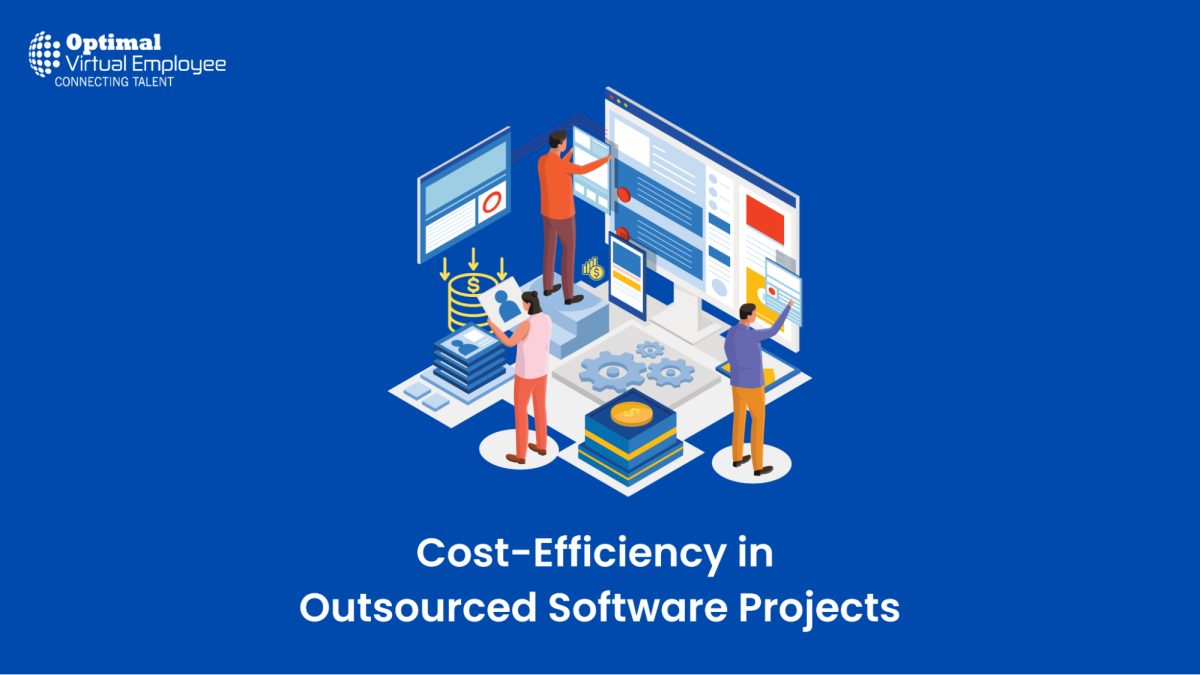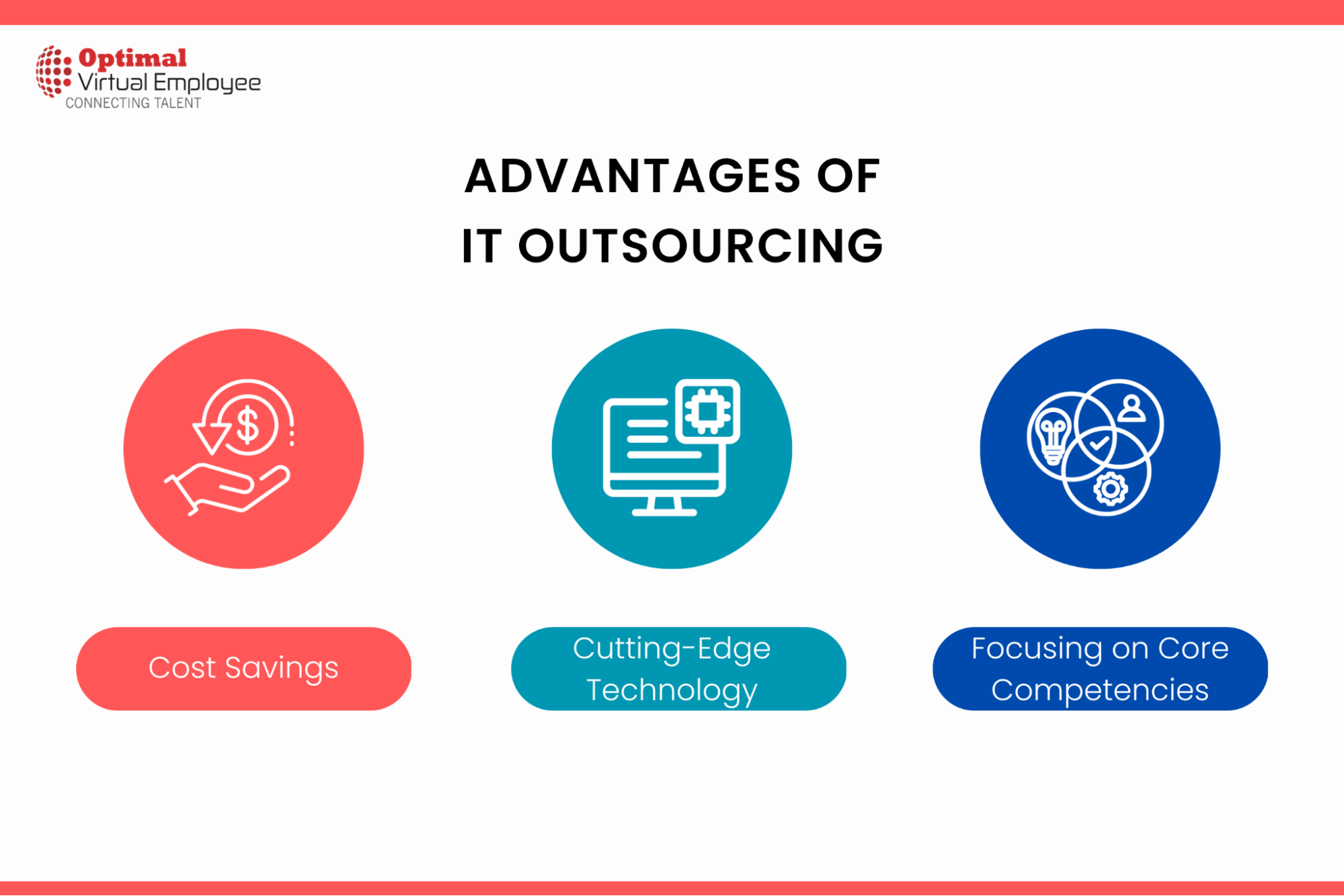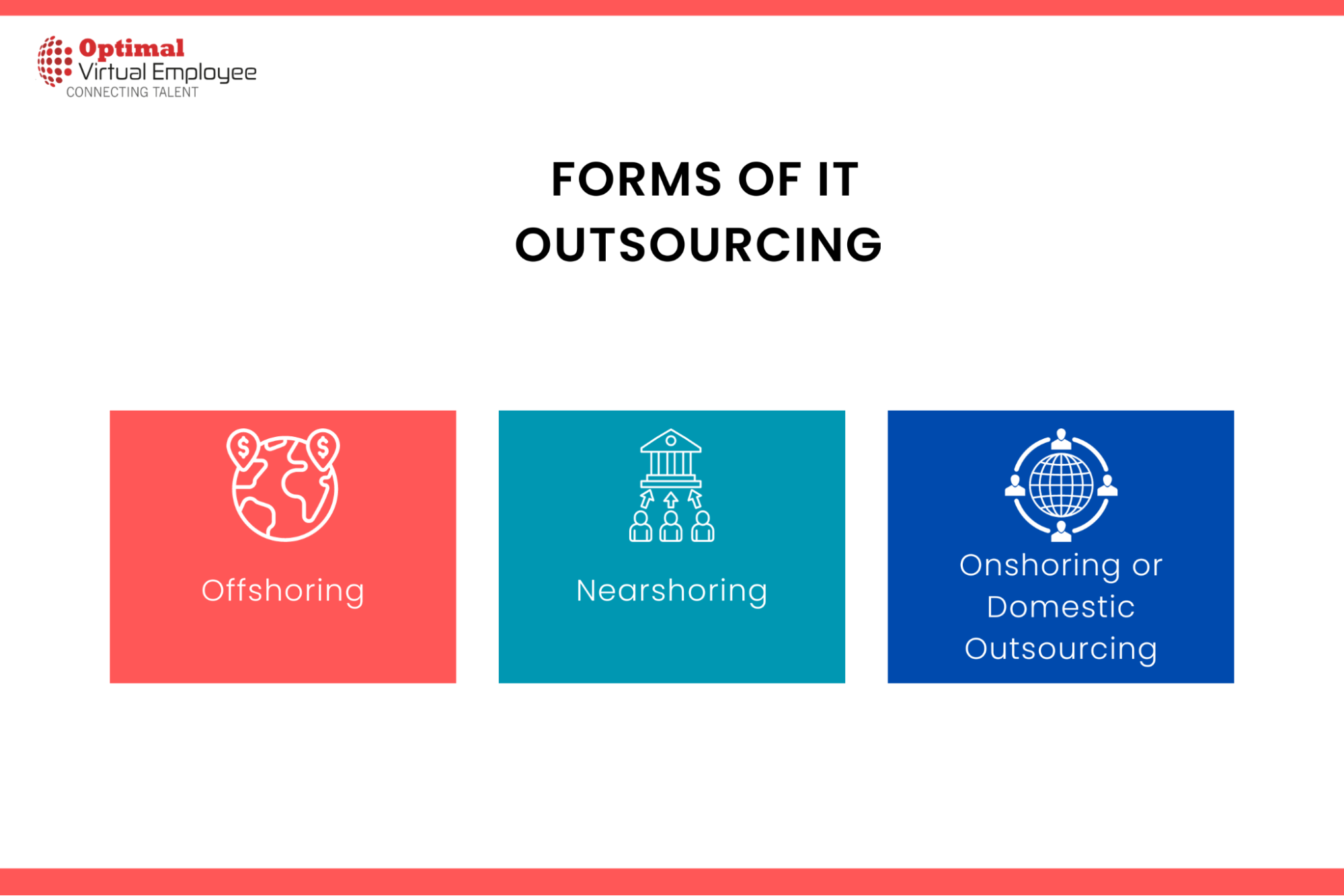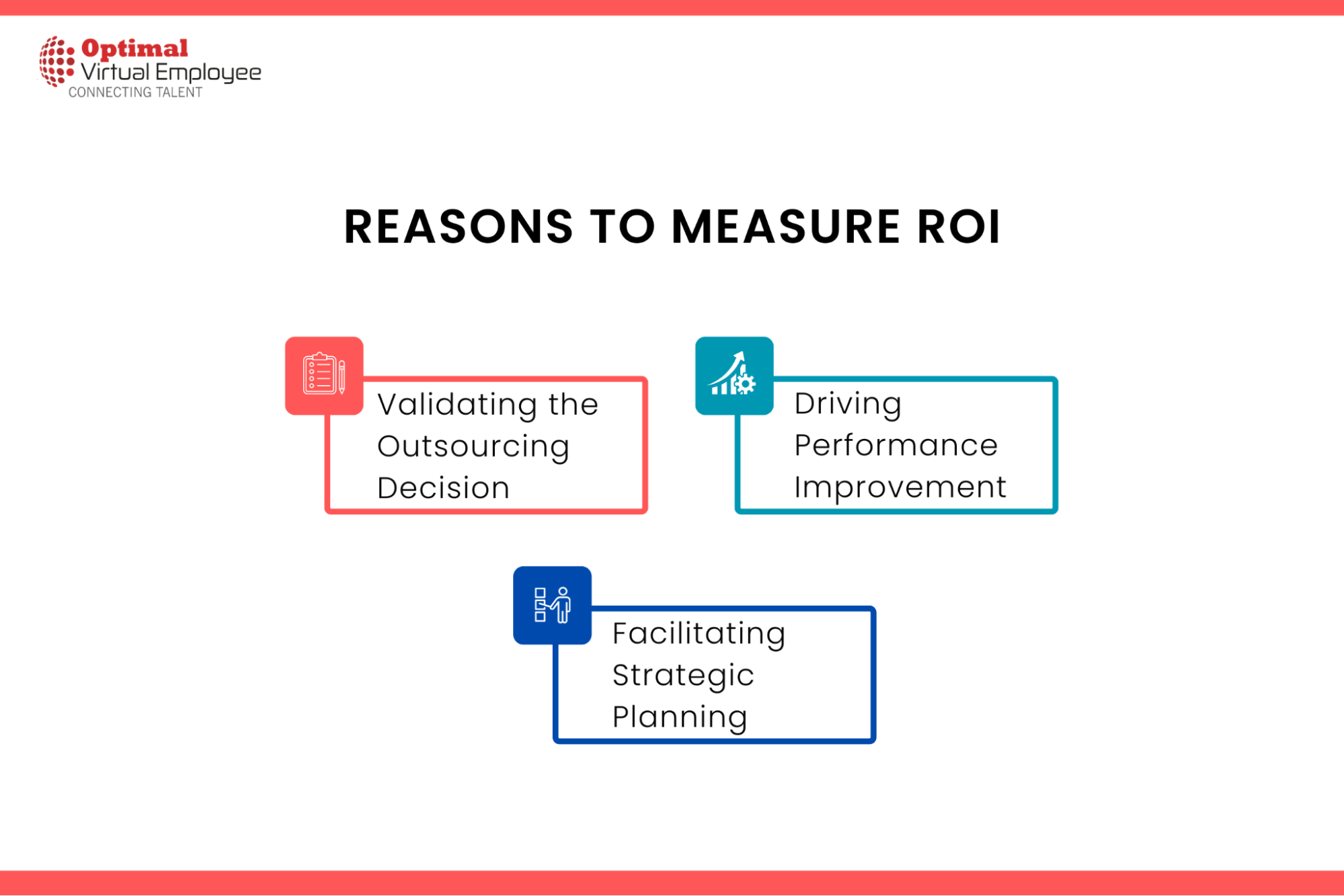In the realm of IT outsourcing, it’s essential to grasp how to gauge the return on investment (ROI) of your outsourced team. Our blog delves into practical methods for evaluating the ROI of IT outsourcing teams. From cost-effectiveness to innovation, explore the multifaceted advantages of a well-managed outsourcing strategy.
Understanding IT Outsourcing
At ParallelStaff, we are IT outsourcing experts, specializing in the approach where businesses delegate specific IT functions to third-party agencies. This section provides an in-depth examination of IT outsourcing, encompassing its definition, advantages, and challenges.
Definition and Advantages of IT Outsourcing
When it comes to IT outsourcing, we are discussing a strategic decision to entrust IT functions to third-party service providers, and it comes with numerous benefits:
Firstly, Cost Savings: Outsourcing has the potential to significantly reduce overhead expenses associated with hiring, training, and maintaining an in-house team. Additionally, the flexibility of paying for services only as needed is a substantial advantage.
Secondly, Access to Global Talent and Cutting-Edge Technology: Through outsourcing, you gain access to expert skill sets and state-of-the-art technologies without making substantial investments in internal resources.
Lastly, the Advantages of Focusing on Core Competencies: By having routine or highly specialized tasks managed by outsourced professionals, your internal team can concentrate their efforts on strategic core operations that drive business growth.
Exploring Various Forms of IT Outsourcing
Various IT outsourcing models can accommodate diverse business requirements:
Offshoring: This entails outsourcing IT functions to a different country, typically aimed at achieving cost savings.
Nearshoring: In this approach, outsourcing occurs in a country geographically close to the company, offering advantages such as shared time zones and cultural understanding.
Onshoring or Domestic Outsourcing: This occurs when companies outsource tasks to a third party within the same country.
Role of Outsourced Software Development Teams
Outsourced software development teams play vital roles in businesses, handling tasks that range from developing new applications and maintaining existing software to integrating systems and providing technical support. They often act as catalysts for business growth in several ways:
Driving Innovation: These teams, with their diverse experiences and specialized skills, frequently bring fresh perspectives and creative solutions to the table.
Enhancing Competitiveness: In today’s rapidly evolving digital landscape, outsourced teams assist businesses in maintaining competitiveness by harnessing the latest technologies and agile methodologies.
Accelerating Product Development: These teams can work tirelessly, expediting the software development process and reducing time-to-market.
The Growing Significance of Cybersecurity in IT Outsourcing
As reliance on digital solutions continues to grow, cybersecurity has emerged as a critical concern in IT outsourcing. An outsourced team with strong cybersecurity capabilities can:
Safeguard Your Data: They can implement robust security measures to protect your sensitive information.
Prevent Security Breaches: Proactive detection and response strategies can avert potential cyber threats.
Ensure Compliance: Outsourced teams can help guarantee that your business complies with relevant data privacy and security regulations.
Challenges in IT Outsourcing
Like any strategic approach, IT outsourcing presents its share of potential challenges. Being aware of these challenges can aid in risk mitigation and effective management of outsourcing relationships:
Communication Barriers: Cultural differences and time zone disparities can occasionally lead to misunderstandings. Employing clear communication protocols and collaborative tools can help surmount these challenges.
Quality Control: Ensuring the quality of outsourced work can be challenging due to geographical distance and a lack of direct control. Regular quality assessments and robust performance metrics can help uphold established standards.
Dependency on the Provider: Excessive reliance on the outsourcing provider can result in the loss of internal knowledge and control over critical functions. Striking a balance between internal and external capabilities can prevent over-dependency.
The Significance of ROI Measurement in IT Outsourcing
At ParallelStaff, drawing from our extensive experience, we emphasize the utmost importance of measuring ROI in IT outsourcing. This section delves into the reasons behind this emphasis, key performance indicators, and the potential consequences of neglecting ROI measurement.
Reasons to Measure ROI
Understanding why measuring ROI is pivotal to the success of IT outsourcing serves as the foundation for establishing a robust assessment system. The reasons for measuring ROI encompass:
Validating the Outsourcing Decision: By quantifying the value derived from outsourcing, you confirm that this strategic move benefits your business.
Driving Performance Improvement: ROI measurement can uncover areas of underperformance that can be addressed to enhance the value gained from outsourcing.
Facilitating Strategic Planning: ROI measurements can guide future business decisions, including whether to expand the outsourcing relationship or explore other service providers.
Key Performance Indicators (KPIs) Vital for IT Outsourcing
To effectively assess the return on investment (ROI) obtained from an outsourced IT team, it’s crucial to identify relevant key performance indicators. Possible indicators include:
Cost Efficiency: This KPI evaluates the savings achieved through outsourcing, taking into account both direct and indirect costs.
Quality of Work: Assessing the work’s quality produced by the outsourced team helps determine its impact on business outcomes.
Timeliness: The outsourced team’s ability to meet project timelines and deadlines can directly affect business operations and customer satisfaction.
A Step-by-Step Guide to ROI Measurement in IT Outsourcing
Measuring ROI effectively necessitates a systematic approach. Here’s a straightforward guide to get you started:
Identify Key Costs and Benefits: Begin by listing all expenses related to outsourcing (e.g., vendor fees, management time) and the benefits received (e.g., reduced staffing costs, increased productivity).
Quantify Costs and Benefits: Assign monetary values to the identified costs and benefits. This can be challenging for intangible benefits like enhanced customer satisfaction or improved business agility, but there are methodologies available to assist, such as the Balanced Scorecard or the Value Scorecard approach.
Calculate ROI: Subtract the total costs from the total benefits and then divide this by the total costs. Multiply the result by 100 to obtain the ROI percentage. A positive ROI indicates that the benefits surpass the costs.
Monitor Continuously: Continuously measure ROI as costs and benefits can change over time. Regular monitoring enables timely adjustments to the outsourcing relationship if necessary.
Risks of Neglecting ROI Measurement
Failing to measure the ROI of your IT outsourced team can lead to various undesirable outcomes, including:
Ineffective Cost Management: Without a clear understanding of ROI, you may not realize when the cost of outsourcing exceeds its benefits.
Overlooked Underperformance: Neglecting ROI measurement can result in unaddressed underperforming areas.
Missed Opportunities for Improvement: Regular ROI measurement can uncover opportunities to optimize the outsourcing relationship and increase the derived value from it.
Analysis of Cost Efficiency
Shifting our focus to Cost Efficiency, it’s essential to recognize its significance when evaluating the ROI of your outsourced IT team. This approach encompasses:
Direct Costs: These encompass clear-cut expenses associated with outsourcing, such as payments to the service provider and charges related to communication or collaboration tools.
Indirect Costs: These are less conspicuous but equally important costs that come into play. They include managerial time spent overseeing the outsourced team and expenses related to risk mitigation, such as data security measures.
Savings: These are noteworthy as well. Savings represent cost reductions achieved through outsourcing, including the avoidance of hiring and training expenses for an in-house team and saved capital expenditure on IT infrastructure.
The difference between savings and the total of direct and indirect costs provides a measure of cost efficiency.
Evaluation of Quality and Speed
Quality and speed are crucial performance indicators in software development, impacting user satisfaction and time-to-market. Assessing these factors can offer insights into the value delivered by the outsourced team. Here’s how:
Quality Metrics: Examine code quality, the number of bugs, and system performance to gauge the quality of work delivered.
Speed Metrics: Track the time taken to complete tasks, response times for queries or bug fixes, and adherence to project timelines to assess the team’s speed.
Combining these metrics offers a well-rounded perspective on performance and its influence on ROI.
Assessing Innovation
Innovation plays a significant role in boosting the ROI of IT outsourcing, as it introduces fresh ideas, enhances processes, and fosters competitive advantages. Here’s how to evaluate it:
Innovation Input: Review the innovative ideas or approaches suggested by the outsourced team.
Innovation Output: Evaluate the tangible outcomes produced as a result of these ideas.
Impact Assessment: Analyze the business effects of these innovations, including user feedback, enhancements in system performance, and the growth of the business.
Conclusion
Looking ahead, the future of measuring IT outsourcing ROI appears exceptionally promising. Fueled by the ongoing advancement of technology, we stand on the brink of revealing a variety of innovative tools and techniques designed specifically to enhance ROI measurement and enhancement. Undoubtedly, this progress signals the arrival of a transformative era in IT outsourcing management.












